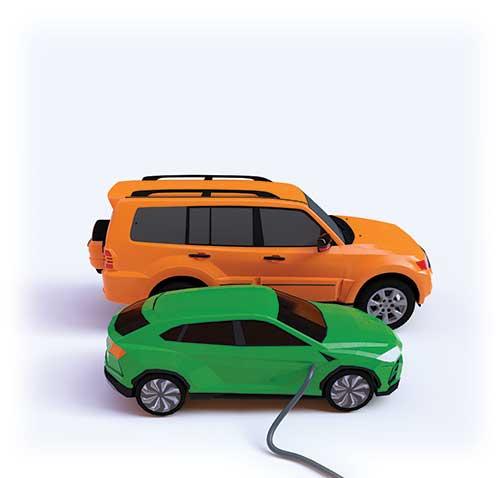Everyone is talking about eco-friendly vehicles these days, as the White House and car manufacturers are attuning us to a future laden with more fuel efficient and electric vehicles (EVs), as well as green infrastructure featuring hundreds of thousands of EV charging stations across the country. To the untrained observer with an appreciation for carbon emissions reduction, energy security, and reversal of climate change, there is little room for disappointment when imagining this impending reality. What could go wrong with this many benefits attached to a highly fuel efficient car purchase?
James Archsmith, assistant professor in the Department of Agricultural & Resource Economics, has uncovered some data trends around this issue indicating that there is something unexpected in play. His findings point to a possible reversal of some of these perceived benefits, and cast new doubt on the effectiveness of policy making that is designed to reduce carbon emissions and incentivize more fuel efficient cars.
In a recent collaborative study led by Archsmith published in the RAND Journal of Economics, his team of researchers found that consumers tend to buy something less fuel efficient than they normally would for their second car after springing for an eco-friendly vehicle. The study reports a 57% reduction in the benefits of driving your fuel efficient car for carbon emissions purely based on the purchase of your second vehicle. This has major implications for carbon emissions, and especially for the design of carbon mitigation pro- grams like Cash-for-Clunkers and Corporate Average Fuel Economy (CAFE) standards that aren’t taking into account the decisions of consumers with multiple vehicles. This data is focused on cars with conventional internal combustion engines, Archsmith explained, but he is starting to engage with other co-authors on much more recent data that includes EVs.

“What we really wanted to do is see how households are making decisions when they purchase and own more than one vehicle,” said Archsmith.“We have a lot of energy policy out there trying to get people to buy more fuel efficient cars, but we really think of every car as this separate purchase that doesn’t rely on any other things going on in the household, and that’s just not the case. Other vehicles, priorities, and how those purchases and the in- tended uses of the vehicles interact are all important to understand how effective our policies are.”
The researchers studied California Department of Motor Vehicle trends in household behaviors for two-car households for a period of seven years. The data revealed multiple trends that correlate with a decrease in overall fuel economy and efficiency. Archsmith believes that the purchase of a second less-fuel efficient vehicle is driven by a series of factors like comfort, size, and the number of children in the household. It’s not an uninformed decision, or a splurge per se, the decision is driven by house- hold-related factors that make a difference in people’s lives.
“I also really paid attention to how people are driving their fuel efficient vehicles and discovered that they end up driving them more as well as farther distances, which ultimately erodes emissions benefits,” said Archsmith.“This is a strong force that was not well-measured before that is going to minimize the benefit of [policy] forcing people to buy more fuel-efficient cars.”
So, what are the lessons learned from a consumer and policy maker standpoint? How will potential changes in fuel economy standards influence human behavioral decisions when purchasing a new car?

“Our findings indicate that safety, space, and environmental awareness are the primary factors driving consumer purchasing decisions,” said Archsmith.“On average, fuel economy standards are putting more fuel-efficient cars in households. That can be good if it reduces gasoline use. But if it causes people to buy a bigger, less fuel- efficient second car to compensate, this unintended effect will erode the intended goals of the policy.”
Archsmith also goes on to explain that the pandemic has changed the way people drive, and he expects to see more purchases of fuel inefficient cars coming off of lockdowns and lower gas prices. When it comes to policy, because of the array of unintended factors Archsmith has unearthed, particularly the increased frequency with which people drive their car, he sees a strong case for putting a price on carbon. This will allow people to make the appropriate decisions as opposed to nudging their vehicle purchases in conflicting directions.
If folks see the environmental damage per price (every gallon of gas costs a certain amount in damage), that has the potential to make a real difference.
Looking ahead, Archsmith will release a public paper which will look at the future of EV adoption. In the meantime, these revelatory findings should give you some good fuel for thought.
By Graham Binder & Samantha Watters